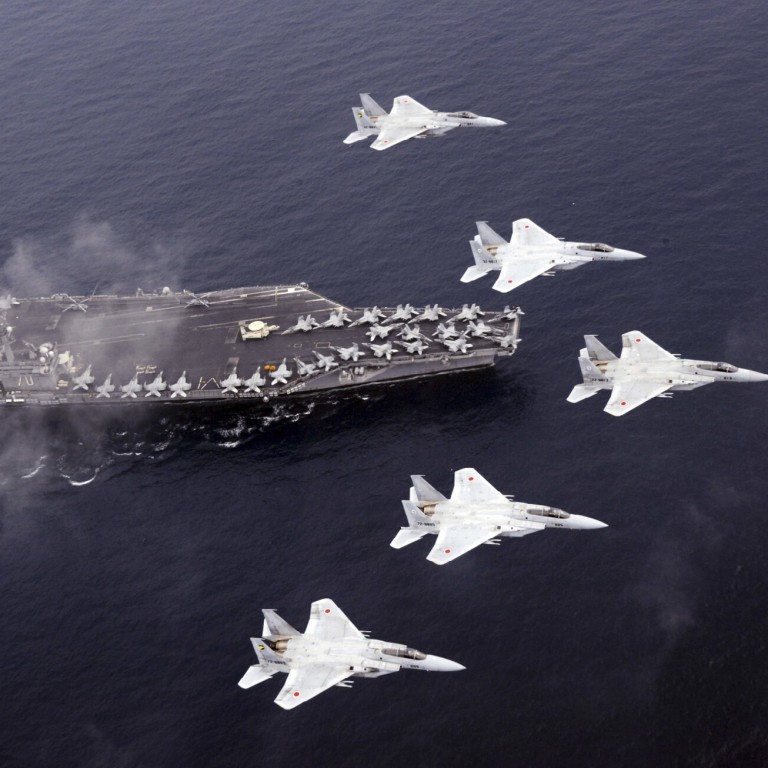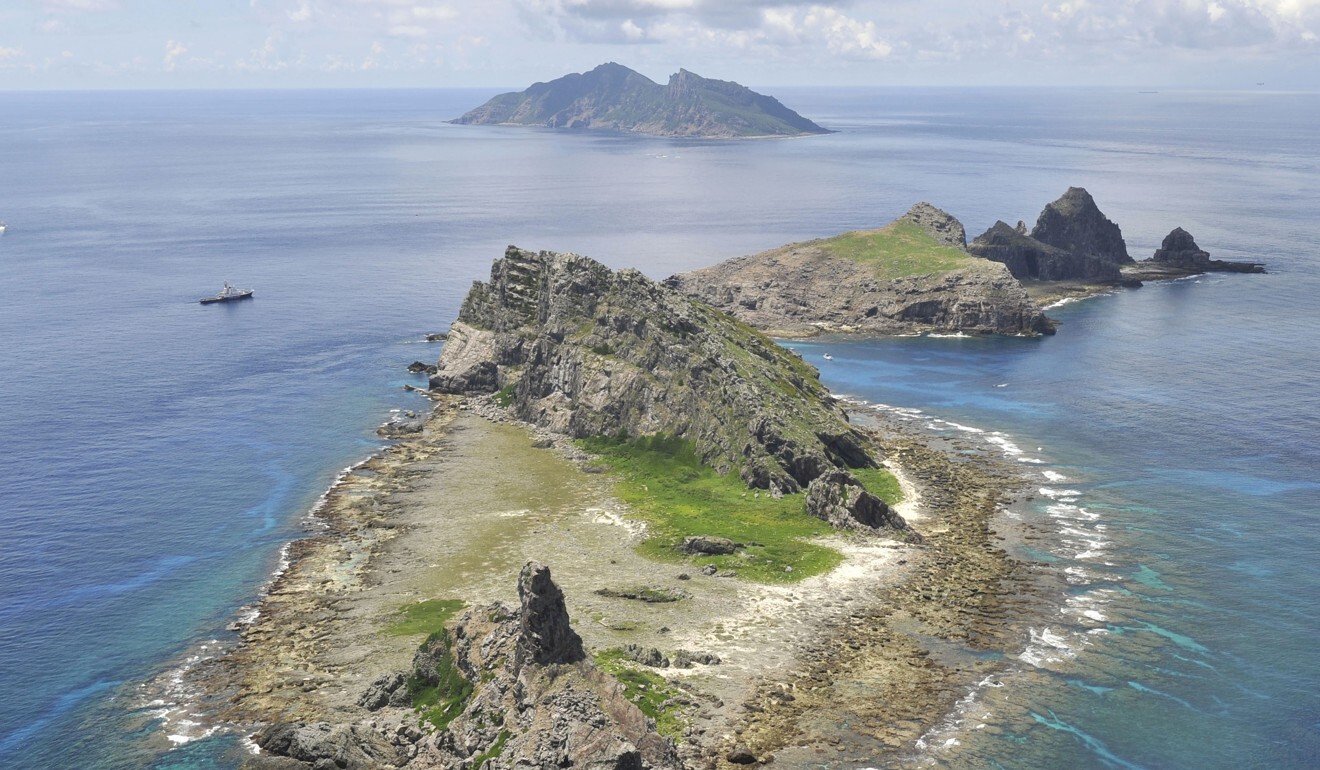
East China Sea: Japan’s plan to counter Beijing in Diaoyus with jetfighter upgrades hits money snag
- With Chinese government ships continuing to encroach on disputed islands, retrofitting of F-15s with cruise missiles takes on new urgency
- But analysts say the programme will miss the operational target date of 2027 because of funding shortfalls and indecisiveness over weaponry choices
Rising costs have significantly delayed Tokyo’s plans to deploy F-15 fighter jets capable of launching cruise missiles against ships or land targets, with Beijing’s ongoing activities close to disputed islands in the East China Sea underlining the importance of the new deterrent to the Japanese military.
A China Coast Guard ship was identified about 31km off Kubashima island on Monday, the Japan Coast Guard reported. A patrol vessel was shadowing the craft to ensure that it did not enter Japanese territorial waters, according to the Yomiuri newspaper.
Australia sends signal to China as it joins Malabar naval exercise
Under international law, Japan’s territorial waters extend 12 nautical miles, or about 22km, from a coastline, with contiguous waters extending a further 12 nautical miles. Foreign vessels are permitted by law to enter a contiguous zone, although nations typically watch foreign-flagged ships very closely when they operate so close to their territorial waters.
Chinese ships have repeatedly entered the contiguous zone around the islands this year, as well as Japan’s territorial waters, ignoring demands that they leave the area.
The deployment of 20 F-15 fighters upgraded to carry anti-shipping or ground-attack cruise missiles was a key part of that plan, although that appears to have been put on hold due to cost issues.

01:56
Diaoyu-Senkaku islands spat deepens as Japan warns China over coastguard ships in East China Sea
The Defence Ministry confirmed to the Mainichi newspaper, however, that just 10.8 billion yen (US$103 million) was provided in the fiscal 2019 budget, sufficient for upgrades to two aircraft. Nothing was set aside in the 2020 budget and the ministry has not applied for funds for the project in its 2021 budget, with experts saying the entire programme will face delays and miss the operational target date of 2027.
“It appears that the ministry has set budgets without actually understanding the technical issues that the project faces,” said Garren Mulloy, a professor of international relations at Japan’s Daito Bunka University and an authority on defence issues.
While retrofitting F-15 fighters to carry new munitions is far more complicated than simply attaching the new weapons to the aircraft, Mulloy also points out that the Japanese military has not yet even decided which one of four possible cruise missile weapons it intends to deploy.

“They have to choose between three imported weapons or they could develop a domestic surface-to-surface missile that is being used by the Maritime Self-Defence Force,” Mulloy told This Week in Asia. “But if they have not made that decision, then they will not be able to make progress on retrofitting the fighters that will be carrying them.”
Mulloy said that upgrading two aircraft is “effectively useless” as they will have little in the way of operational capability, while aircrew and ground crew will not be able to gain experience in working with the new munitions.
Once operational, the missiles will have a range of 900km and will serve as a key element in the defence of Japan’s outlying territories, but will also give the Japanese military the ability to target bases in other countries. The Japanese government is presently discussing whether it has the legal right to attack another country’s military facilities if it believes an attack on Japan is imminent.
It’s very possible that this latest aggression by China is a result of the US presidential elections
And although Chief Cabinet Secretary Katsunobu Kato stated that Japan considers Chinese vessels entering Japanese waters to be an “extremely serious matter” and that an official protest has been made to Beijing, Murakami says there may be little more that Tokyo can do diplomatically.
Detente denied: Japan snubbed Beijing on Senkakus to tighten US ties
Even though Kato said Japan “will heighten our vigilance,” Murakami suggested Tokyo has few other options.

